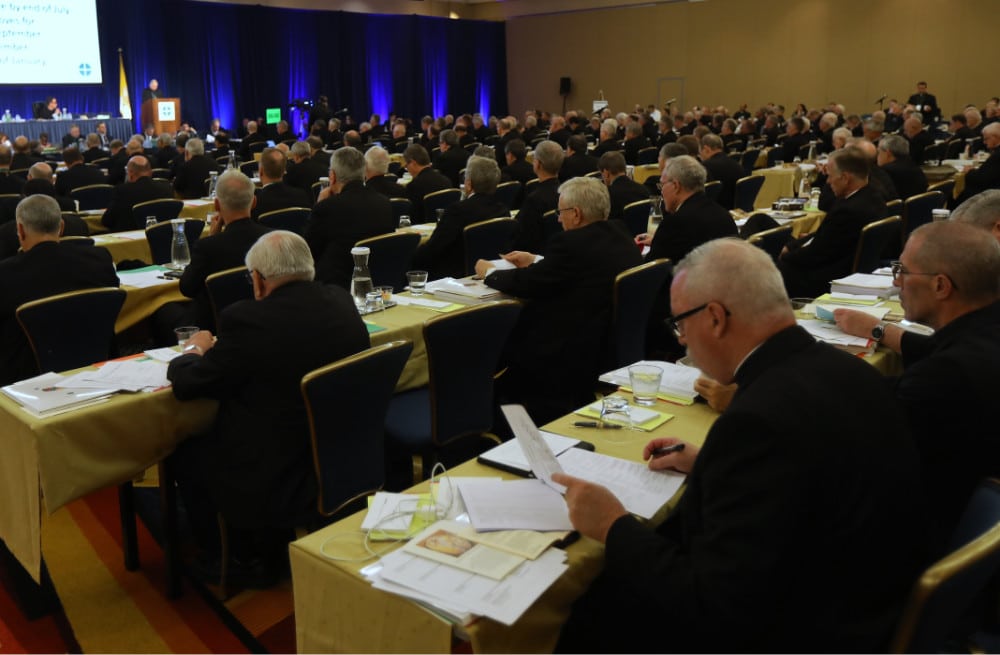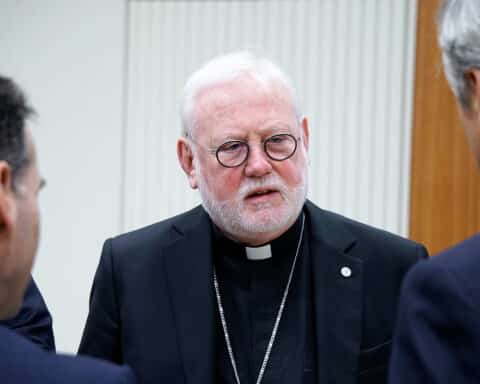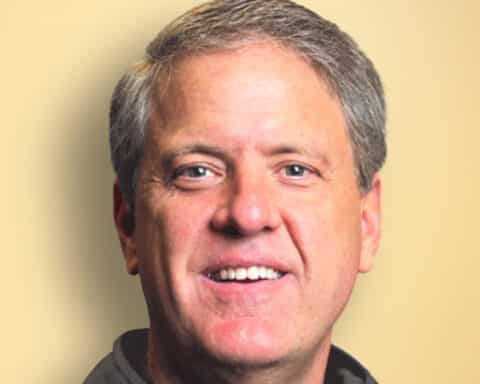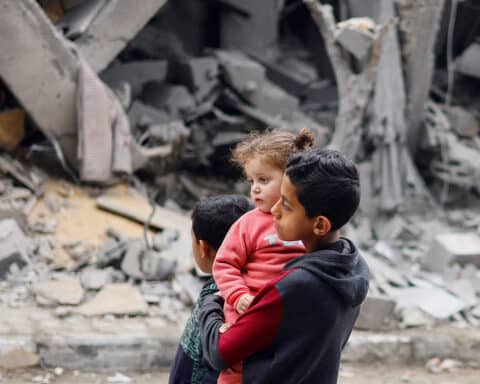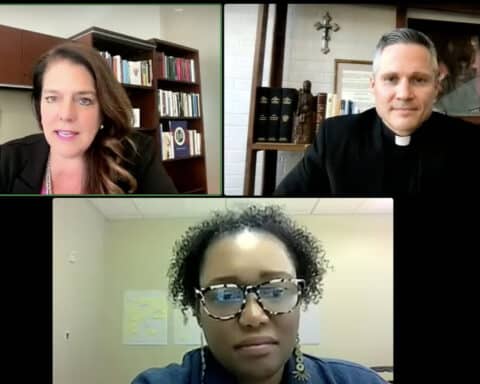The times do change, of course. But there are times when the present seems bent on repeating the mistakes of the past. The U.S. Conference of Catholic Bishops may now be illustrating the truth of that.
The American bishops will hold their semiannual general assembly Nov. 14-17 in Baltimore. Two hundred-plus bishops from around the country will gather to choose a new conference president, vice president and committee chairmen, and transact other business.
The meeting will be open to direct coverage by the news media. But only sort of. Out of a meeting scheduled to last four days, only a day and a half will be open to journalists and livestreamed on the USCCB website. Two and a half days’ worth of meetings will take place behind closed doors, in executive session or in closed regional meetings.
In fairness to USCCB, if past practice is followed, the bishops will spend part of that time in prayer and meditation. No reasonable person would care to disturb the bishops while they’re doing that.
But what about the rest of the time? Closed doors, no reporters or camera people, no livestream.
A USCCB source told me several weeks ago that something like this was in the works.
The reason for the shift to secrecy is simple, the source said: The bishops feel more “comfortable” not being observed disagreeing with one another.
Funny thing is, we’ve been here before. Pardon me as I reminisce.
Media interest in the bishops peaked following the Second Vatican Council of 1962-65. Large numbers of journalists turned out for the American hierarchy’s semiannual general assemblies. But what they found when they got there were closed doors. Continuing their habit of pre-Vatican II days, the bishops met exclusively in executive session.
This went on for the next several years. As the newly named head of media relations for the bishops’ conference, I observed the situation up close for the first time at the meeting of November 1969. What I saw were frustrated journalists, angry bishops and rampant leaks — mainly by bishops themselves.
I reported my conclusions and recommendations in a post-meeting memo to the conference secretary-general, Bishop Joseph Bernardin. The bishops were shooting themselves in the foot by having closed-door general meetings, I said. Bishop Bernardin didn’t tell me I was right nor did he tell me to drop the subject. And soon, I found important agreement from the conference’s new communication secretary, Robert Beusse, and the chairman of the bishops’ communication committee, Archbishop Philip Hannan of New Orleans.
It was a hard slog, but the breakthrough finally came at the general meeting in November 1971. The bishops voted 140-106 to admit accredited journalists. No landslide, but still a historic event. I tell the story in my book about Church secrecy, “Nothing To Hide” (Ignatius Press, $13.95).
The first open meeting took place the following spring in Atlanta, with 75 reporters on hand. A perceptive assessment was provided several years later by Richard Ostling, a serious journalist and evangelical Christian who was religion editor of Time and later chief religion writer of the Associated Press.
The big winners, Ostling concluded, were the bishops and, through them, the rest of the Church. “The bishops discovered that in this area … they could be authentically Catholic and open in style, seem less aloof from their constituency, gain ‘credibility,’ and exhibit their own growing self-confidence as a body.”
Now, fast forward.
A USCCB news release says that, in Baltimore, the bishops “are expected to decide their approach” to Faithful Citizenship, the quadrennial document in which they declare their positions on issues before presidential election years.
Abortion is naturally one of these. And at a time when a Catholic president talks like a pro-choice propagandist, it’s hardly surprising that bishops should disagree on exactly what to say. But do Catholics really need shielding from episcopal disagreement on something everyone can see is a touchy question for them?
Arguing for openness half a century ago, I cited practical considerations. By meeting in closed sessions, I reasoned, the bishops were hurting themselves.
That’s still true. But since then, I’ve come to believe that there is a more compelling argument for openness. As Vatican II reminded us, the Church is essentially a community — an expression of communio — whose members differ in office and function but are fundamentally equal in dignity and rights.
Open, honest and full communication is required for the good health of any community. Certainly, that is true in a synodal Church. Secrecy and confidentiality have their place. But unnecessary secrecy cuts leaders off from their people and too easily becomes a tool of manipulation and control.
Say a prayer for the bishops. Closed doors don’t help.
Russell Shaw is a contributing editor for Our Sunday Visitor.

